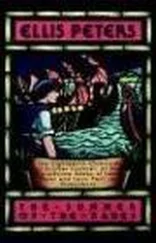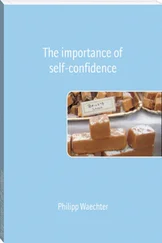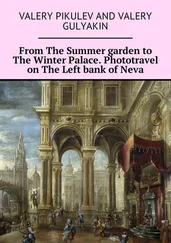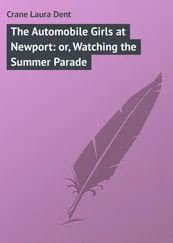
4 Layers of time in Berlin: ‘Trümmerfrauen’ clearing away the rubble for the reconstruction of the Hansaviertel, 1957.
Peter Gente must have had similar feelings as he walked around town with his vade mecum in his pocket. Putting the past behind one was especially difficult in Berlin, where past and future overlapped. When Gente mentioned his new favourite author at home, his mother smelled ‘Jewish subversion’: she had retained her sensitivity to racial distinctions after the end of the war. 36Her son’s reaction was to drop law and enrol in philosophy, sociology and German literature. His sitting ‘ten hours a day at his desk’ to get through the gigantic reading load of three courses cannot be explained by political misgivings alone. 37Adorno was more than just a moral authority breaking the silence that hung over the past: he attracted his first supporters by feeding their hunger for culture. He had noticed with surprise, after his return from exile in the United States in 1949, his Frankfurt students’ zeal for ‘the mind’. In a letter to Leo Lowenthal, he compared his seminar with a Talmud school: ‘as if the spirits of the murdered Jewish intellectuals had descended into the German students’. Although these students had his respect – and although they helped him to feel at home in West Germany – Adorno found their political apathy worrying. People who would rather discuss poems than the state of the world, he felt, were continuing a German pattern of behaviour that prevented them from recognizing the gravity of the disaster. And yet, by the same token – such was the dialectic of Adorno’s success – they were bound to be fascinated by Adorno. 38
The work of the intellectual, Peter Gente read in Minima Moralia , encompassed ‘what the bourgeois relegate to non-working hours as “culture”’. 39On this point, at least, the book must have made sense to him straight away. Adorno made going to see Herbert von Karajan conducting, or to the Komische Oper, a serious matter. In order to be ‘susceptible of aesthetic contemplation’, he explained in one of his radio lectures, art must ‘be thought through’ as well. 40Only by reflecting on its social entanglements can one activate its secret potential for emancipation. Thus, for readers like Gente who felt a vague desire to create culture themselves, Adorno had a tempting job to offer: they were expected to act as cultural critics. Even the cinema was an opportunity to practise the strenuous toil of conceptual reflection. After the awakening he had experienced in the Siemens factory, Gente never had to award school grades again. His new reading endowed him with different ways of responding altogether. 41
Adorno is said to have been the ‘trustee’ of a German tradition, that of Beethoven and Hölderlin, which had been compromised and had to wait for his work to make it listenable and readable again. Perhaps it amounts to much the same thing if we say that West German post-war intellectuals not only had a weakness for culture, but also felt a need to raise the degree of thinking involved in approaching works of art. They understood Adorno’s belief that, after the breakdown of civilization, culture ‘in the traditional sense’ must be seen as ‘dead’. Only by adopting a critical distance could they accept their cultural heritage – and by the same token that heritage took on a social relevance. Joachim Kaiser wrote that nothing could be ‘complicated enough’ for German students. Witold Gombrowicz, spending his year in West Berlin literary and academic circles, found the intellectual climate of 1963 too ‘cerebral’. Alongside the aestheticization of theory to which Adorno contributed with his books, the theorization of the aesthetic experience was the imperative of the moment. 42
As the beneficiary of both developments, the new genre was suspected of cant. One of the first to fall under that suspicion was Adorno’s antithesis, the Stuttgart philosopher of technology Max Bense. Bense’s project ‘Programming Beauty’ was aimed at subjecting the field of aesthetics to the mathematical calculations of information theory. Like a cultural engineer, he wielded formulas to dismantle irrational faith in art. Aesthetic philosophy in Frankfurt and Stuttgart could not have been more different in tone: in Frankfurt, the critique of instrumental reason was de rigueur ; in Stuttgart, the hard language of science ruled. But, in spite of the stylistic difference, there were striking parallels: Bense too applied his complicated formulas to works of art; he too had set aside artistic ambitions for the sake of theoretical work; his theory too was marked by an unmistakable idiom. 43As early as the 1950s, Bense’s incomprehensibility was so legendary that he became the target of a happening almost before the term was invented. In 1959, the group SPUR, the German wing of the Situationist International, announced a lecture by Bense in Munich – which the Stuttgart professor had to cancel at the last minute. Fortunately, he was able to send an audio tape, which the 300 attendees heard as a substitute – while watching a solitary glass of water on the lectern. The audience listened, could hardly believe its ears – and applauded. Only later, when Bense took legal action against the organizers, did it transpire that he had neither cancelled nor been invited in the first place. Hans-Peter Zimmer, one of the Situationists, had looted his publications and recorded a pastiche, disguising his voice. The lecture was exactly what the audience had not dared to pronounce it: pure nonsense. The discourse of theory, the sound of the sixties, had entered the period of its parody as soon as the decade began. 44
In the Literary Supermarket
Peter Gente was fascinated with Adorno to such a point that he wanted to read everything the man wrote. Starting with his gateway drug, Minima Moralia , he systematically worked his way backwards to the early writings on musical aesthetics, some of which were difficult to find at that time, before the Suhrkamp edition of Adorno’s collected works. Library research was necessary to reconstruct the theoretical context. Gente collated bibliographical lists as meticulously as he had kept his cultural diary (now abandoned), copying out tables of contents on the typewriter and making thick, gum-bound Xerox copies which are now almost completely faded.
And, while catching up on Adorno’s past publications, Gente also had to keep up with his current production. What with the author’s growing popularity and presence in the West German media, that was a time-consuming task. Together with a handful of like-minded readers – who were thought nuts by their fellow students – Gente formed an ‘information syndicate’ to lay hands on everything Adorno published, no matter how obscure the outlet. ‘He’d just written something in Neues Forum , so I ran to Schöller’s and bought it.’ 45(Marga Schöller’s historic shop in Knesebeckstrasse was where West Berlin’s revolutionary students bought their literature before the little Red bookshops usurped the market.) The thick dossier Gente compiled as an Adorno fan would later become his seed capital as a publisher. His theory archives grew more diverse with each passing year, and eventually spawned the first Merve titles.
Among the earliest articles Gente clipped and filed is a commentary by Adorno on the 1959 Frankfurt Book Fair. In it, Adorno expressed a vague ‘anxiety’ that had oppressed him for some time at the sight of each season’s new publications: it seemed to him that the books no longer looked like books. The covers had become ‘advertising’, degrading the reader to a consumer as they made their advances. They heralded the ‘liquidation of the book’ in ‘all too intense and conspicuous colours’. A proficient stylist, Adorno needed no more than two columns to run the gamut of his cultural criticism: the diagnosis of death where life only appeared to persist; the successive moments of horror, realization and despair. For Adorno would not be Adorno if he did not finish with a dialectical sidestep and declare the industrialization of the book market inevitable. The melancholy over the deterioration of a cultural artefact ‘in which truth presents itself’ was all the deeper for that. 46
Читать дальше













